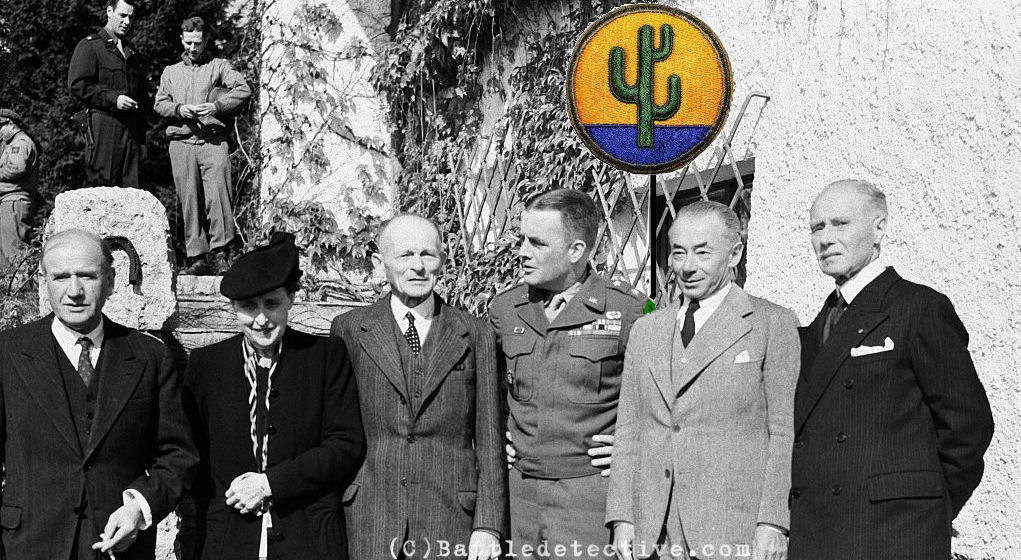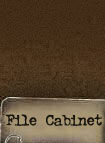 |
| |
|
| |
File
No.:

Title:
Location of the Strangest
Battle of World War Two
Investigation made at:
Municipality of Itter,
district Kitzbühel &
Municipality of Wörgl,
district Kufstein, Tirol,
Federal Republic of Austria
(47°28'14.4"N
12°08'25.2"E)
Period Covered:
5MAY1945
Date: OCT2018
Case
Classification:
Location of Historic Events
Status
of Case:
Case Closed
|
(click to enlarge)

Now&Then comparison at the entrance
of Itter Castle.
Now: Battle Detective taking the
place of French General WEYGAND in
the "Then"-photo taken after he and
his wife have been liberated on
5MAY1945
|
REASON FOR INVESTIGATION
Near the end of WWII in
Europe in 1945, one of the
strangest battles took place in
Austria where American and
German soldiers actually fought
alongside each another as
allies. This battle is lesser
known to the public but is
featured in Stephen Harding’s
2013 book "The Last Battle".
There are plans to make a movie
about it in 2018.
SYNOPSIS: |
|
ITTER CASTLE is a small castle
on a hill in the small village
of ITTER in TIROL, Austria. It
was built in the 13th century.
During WWII, it was used by the
Nazis to keep prominent French
prisoners. The castle was first
commandeered by an SS officer in
FEB1943 and was being used as
part of a prison facility by
APR1943. Significant prisoners
over the next two years included
former French prime ministers
Paul REYNAUD and Edouard
DALADIER and general Maurice
GAMELIN, as well as French
tennis star BOROTRA and Charles
DE GAULLE's older sister. |
The commander of the prison fled
on 4MAY1945 and many of the SS
guards left the castle soon
afterwards. A German major,
Josef GANGL, was commanding
German anti-Nazi soldiers in the
WÖRGL area in the closing days
of the war.
On 3 MAY1945 one of the
prisoners left the castle
carrying a letter in English
asking for Allied assistance
which he was to give to the
first American troops he
encountered.
WÖRGL lay 8 kilometers (5 miles)
down the mountains but was still
occupied by Nazi troops. Late
that evening, the prisoner
reached the outskirts of
INNSBRUCK and encountered an
advance party of the 409th
Infantry Regiment of the US
103rd Infantry Division and
informed them of the castle's
prisoners. They were unable to
authorize a rescue on their own
but promised an answer from
their HQ by morning of 4MAY1945. |
Tanks to the rescue
Later, 1LT John C. LEE of the
23rd Tank BN of the 12th Armored
Division volunteered to lead the
rescue of the French prisoners
at ITTER CASTLE accompanied by
Major GANGL and his German
soldiers. The rescue party
included 14 Americans, 10
anti-Nazi Germans, and two M4
Sherman tanks. After a personal
reconnaissance of the castle
with GANGL in his Kübelwagen,
LEE left 2 of his Shermans
behind but requisitioned 5 more
with infantry support from the
recently arrived 142nd Infantry
Regiment of the 36th Infantry
Division. During the advance,
LEE was forced to send the
reinforcements back when a
bridge proved too tenuous for
the entire column to cross once,
let alone twice. Leaving one of
his Shermans behind to guard it,
he went along accompanied only
by 14 GI’s, GANGL, and a driver,
and a truck carrying 10 former
German artillerymen. 6
kilometers (4 miles) from the
castle, they destroyed a unit of
SS troops that had been
attempting to set up a
roadblock. |
Battle of Itter Castle
Upon LEE's arrival at the
castle, the prisoners greeted
the relief force
enthusiastically but were
disappointed at its limited
size. Lee placed the men under
his command in defensive
positions around the castle and
positioned his tank named "BESOTTEN
JENNY" at the main entrance.
LEE had ordered the French
prisoners to hide, but they
remained out of the castle’s
buildings and fought alongside
the GI’s and German regular army
soldiers. Throughout the night,
the defenders were harassed by a
reconnaissance force sent to
probe the fortress for
weaknesses and the strength of
its defense. On the morning of
5MAY1945, a force of 100–150
troops of the 17th Waffen-SS
Grenadier Division launched
their attack. Before the main
assault began, GANGL was able to
contact Alois MAYR, the Austrian
resistance leader in WÖRGL, via
telephone and requested
reinforcements. Only 2 more
German soldiers under his
command and a teenage Austrian
resistance fighter, Hans WALTL,
could be spared, and quickly
they drove to the castle.
BESOTTEN JENNY provided
machine-gun fire support until
it was destroyed by German fire
from an 88 mm gun. The tank was
manned only by a radioman
repairing the tank's radio, who
escaped unharmed.
Meanwhile, by early afternoon,
the news of the defenders'
predicament had finally reached
the 142nd Infantry, and a relief
force was deployed. Aware he had
been unable to give the 142nd
complete information on the
enemy’s strength and disposition
before communications had been
cut, LEE accepted tennis star
BOROTRA's offer to leap from the
castle wall and run the gauntlet
of SS check points and ambushes
to deliver it. He succeeded,
requested a uniform, and then
joined the force as it hurried
to reach the castle before its
defenders fired their last
rounds of ammunition. The battle
ended with the SS men filtering
back into the surrounding wooded
hills en the French prisoners
being freed. |
|

The freed
French statesmen gather around
Major General Anthony C.
McAuliffe (in military uniform),
commanding officer of the US
Army's 103rd Infantry Division.
McAuliffe was promoted to this
rank after successfully leading
the defense
of the encircled Belgian
city of Bastogne
during the Battle of the Bulge.
On his uniform the General still
wears his paratrooper jump
wings,
but he has changed his
"Screaming Eagle" patch of the
101st Airborne Division with the
cactus patch of the 103rd. |
|
CONCLUSION:
For his role in defending the
castle, 1LT LEE received the
Distinguished Service Cross and
was promoted to CPT.
MAJ Sepp GANGL was KIA by a
sniper while trying to bring
former French Prime Minister
REYNAUD into safety and was
honored as an Austrian national
hero. A street in WÖRGL is named
after him. The battle was fought
5 days after Adolf Hitler had
committed suicide and only 2
days before the signing of the
Third Reich's unconditional
surrender. It was also the only
battle where Americans and
Germans fought alongside one
another during the war.
On 21OCT2018 this agency visited
the village of ITTER and its
castle, the Sepp GANGL Straße in
WÖRGL and the monument in his
honor in the town’s cemetery. |
|
EXHIBITS
(click to
enlarge)
Itter castle today





In Itter,
Schloßweg
(Castle Road) leads to the front
gate of the castle,
on May 5th 1945 guarded by "Besotten
Jenny".
The castle is private property
and access is 'Verboten!".
Wörgl



In Wörgl,
Sepp Gangl-Straße
is named after the Wehrmacht
Major who
was killed while defending
Itter Castle against SS troops.
In the local cemetery is his
grave which also lists the local
men and women who where killed
during both World Wars. |
|
|
|
Back to Battle Studies
 |
| |
|
|
| |
| |
| |
| |
| |
| |
|













